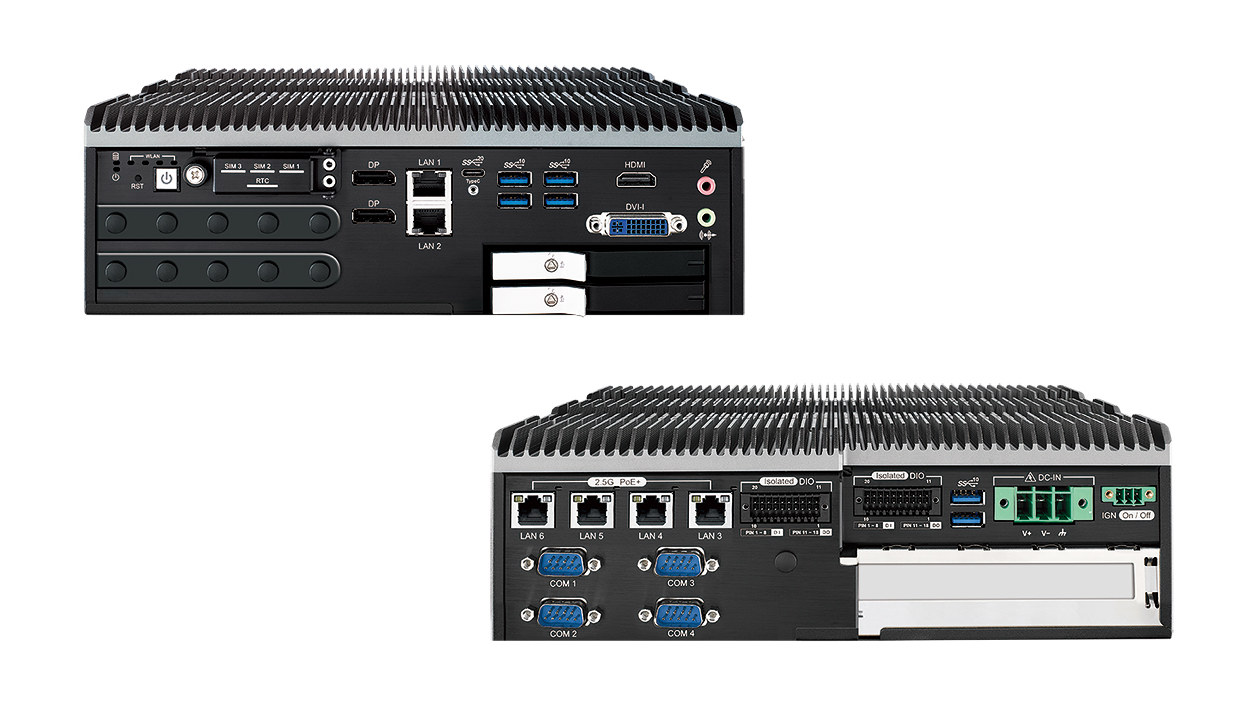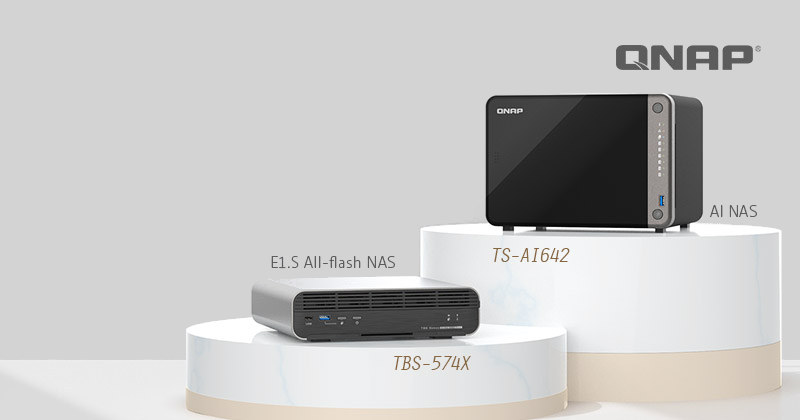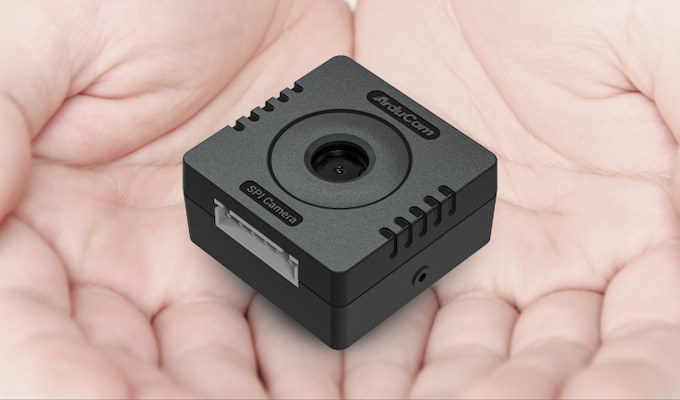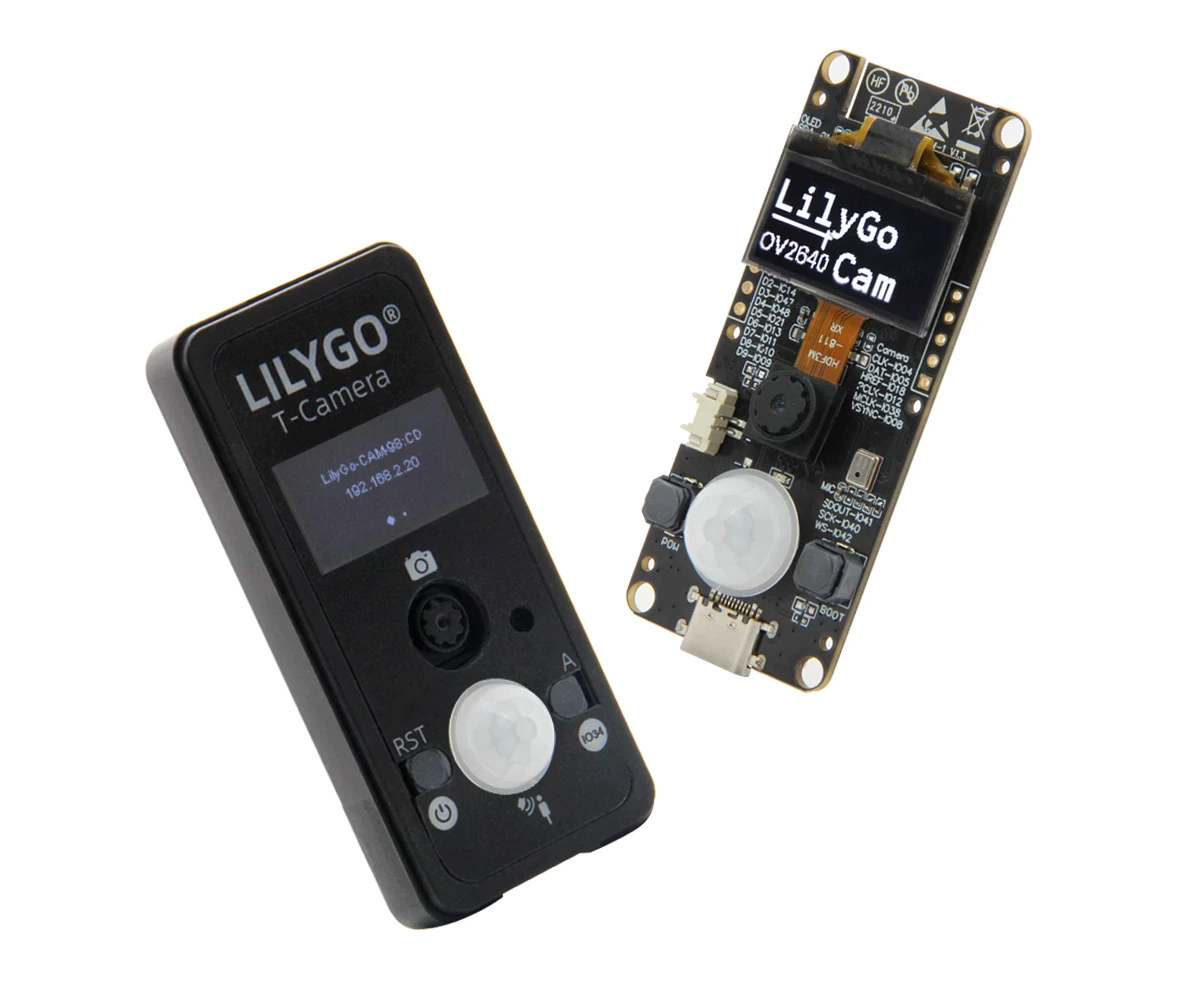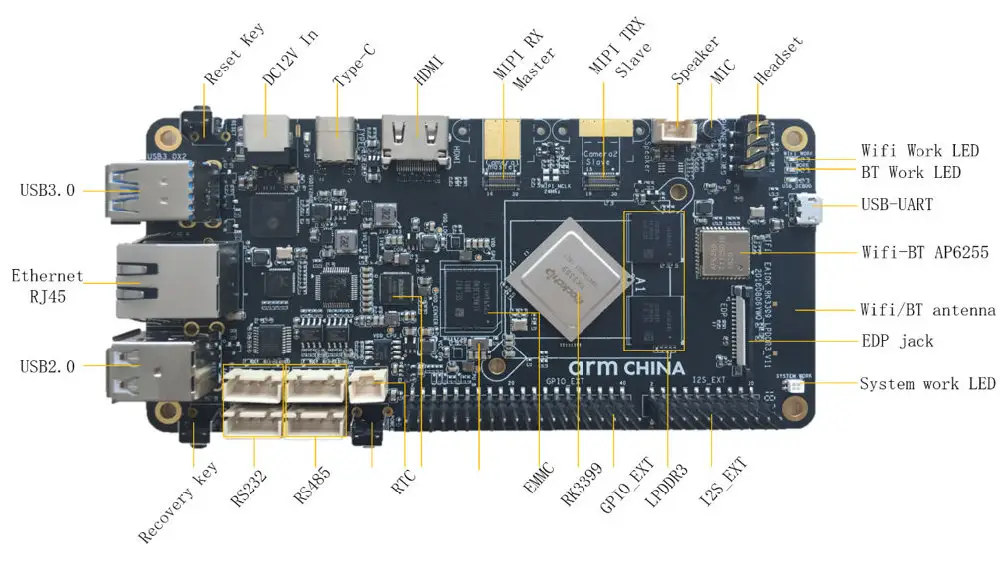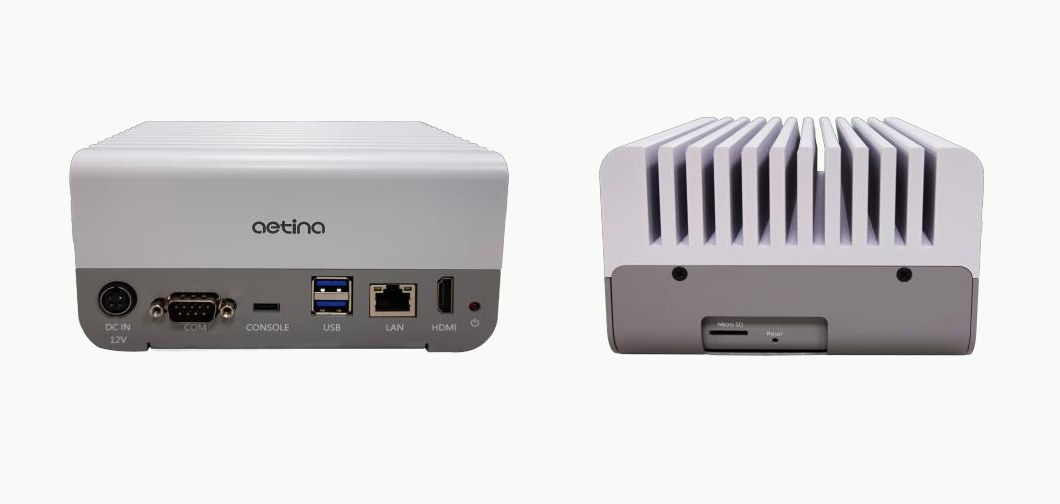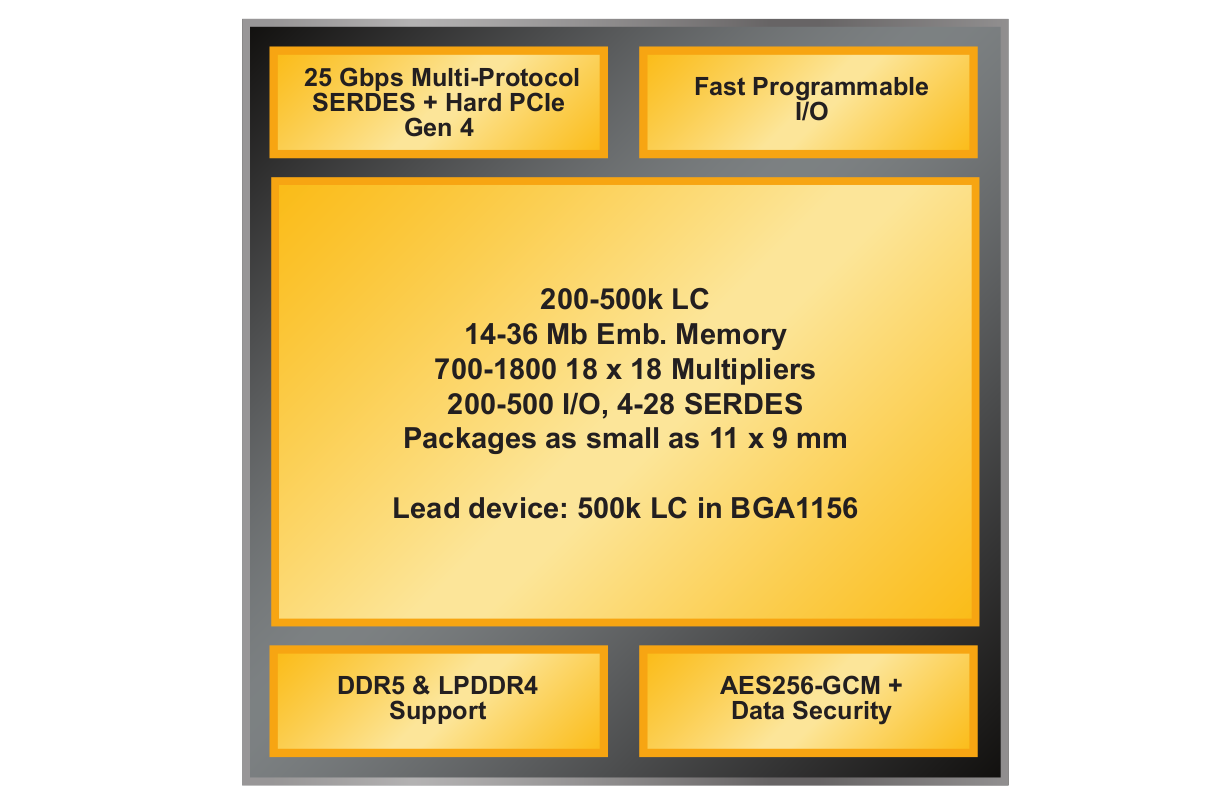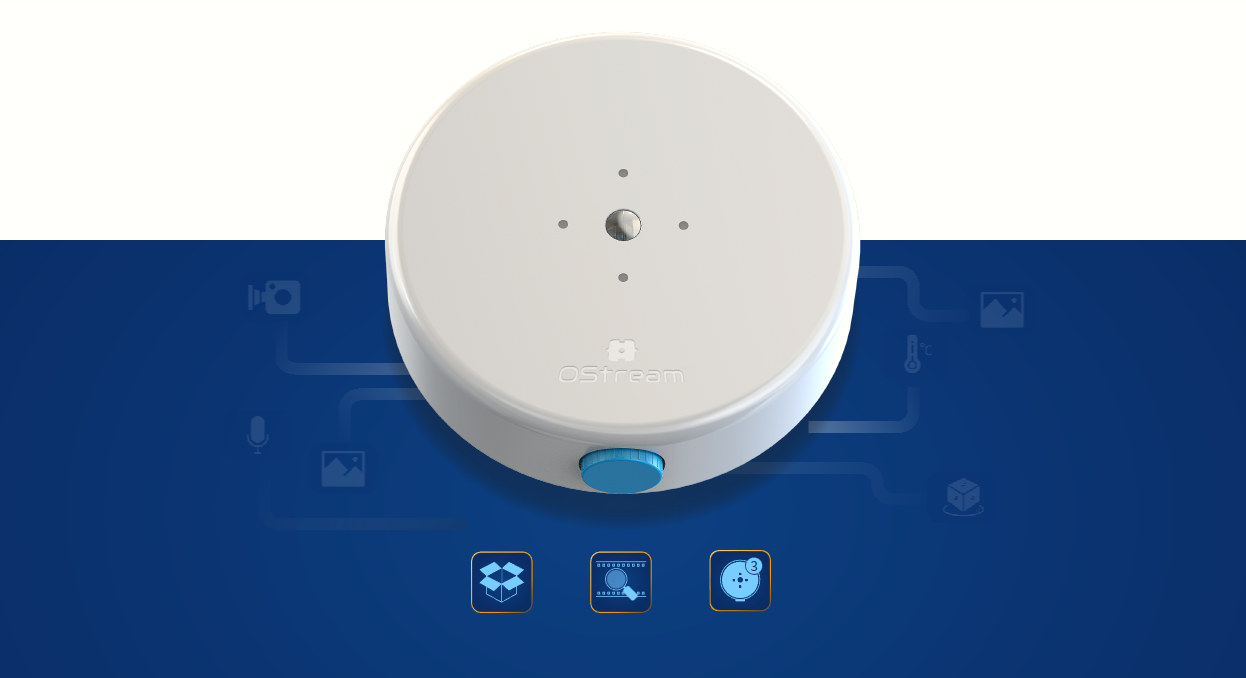Vecow ECX-3200 is an expandable, fanless embedded system powered by Intel 13th generation Core i9/i7/i5/i3 Raptor Lake-S processor or 12th generation Alder Lake-S processor designed for rugged Machine Vision, AMR, Rolling Stock, Smart Retail and Edge AI applications. The ECX-3200 supports up to 64GB DDR5, SATA & NVMe storage, offers four 2.5GbE RJ45 or M12 ports with PoE+ on the rear panel, plus one additional Gigabit Ethernet port and a 2.5GbE port on the front panel, four video outputs up to 8Kp60 resolution, several USB 3.2 ports up to 20 Gbps, some serial ports, as well as isolated I/Os. Vecow ECX-3200 specifications: SoC Up to 24-core 13th Gen Intel Core i9/i7/i5/i3 Raptor Lake-S processor with Intel Xe graphics Up to 16-core 12th Gen Intel Core i9/i7/i5/i3 Processor Alder Lake-S processor with Intex Xe graphics System Memory – Up to 64GB DDR5-4800 (2x 32GB) via 2x SO-DIMM sockets Storage 2x SATA […]
QNAP preps Rockchip RK3588 AI NAS and Intel NAS with hot-swappable E1.S SSDs
QNAP has been teasing two potentially interesting NAS coming up soon: the TS-AI642 AI NAS leveraging the 6 TOPS NPU in Rockchip RK3588 Arm processor for image and facial recognition, and the TBS-574X NAS powered by an Intel Core i3-1220P Alder Lake CPU and taking up to five hot-swappable E1.S NVMe PCIe SSDs. Details are limited since neither device is available yet, but both NAS are equipped with relatively powerful Arm and Intel processors and offer some innovative features. QNAP TBS-574X NAS with Rockchip RK3588 Preliminary specifications: SoC – Rockchip RK3588 octa-core 64-bit Arm processor with 4x Cortex-A76 cores @ 2.2 GHz, 4x Cortex-A55 cores @ 1.8 GHz, 6 TOPS NPU Storage – 6x SATA III bays Video Output – 2x HDMI 2.1 ports Networking – Built-in 2.5GbE, PCIe Gen 3 slot for 10GbE module The main highlight is the 6 TOPS AI accelerator that boosts the performance of the […]
ArduCam Mega – A 3MP or 5MP SPI camera for microcontrollers (Crowdfunding)
ArduCam Mega is a 3MP or 5MP camera specifically designed for microcontrollers with an SPI interface, and the SDK currently supports Arduino UNO and Mega2560 boards, ESP32/ESP8266 boards, Raspberry Pi Pico and other boards based on RP2040 MCU, BBC Micro:bit V2, as well as STM32 and MSP430 platform. Both cameras share many of the same specifications including their size, but the 3MP model is a fixed-focus camera, while the 5MP variant supports autofocus. Potential applications include assets monitoring, wildfire monitoring, remote meter reading, TinyML applications, and so on. ArduCam Mega specifications: Camera Type 3MP with fixed focus 5MP with auto-focus from 8cm to infinity Optical size – 1/4-inch Shutter type – Rolling Focal ratio 3MP – F2.8 5MP – F2.0 Still Resolutions 320×240, 640×480, 1280×720 x 1600 x1200x 1920 x 1080 3MP – 2048 x 1536 5MP – 2592×1944 Output formats – RGB, YUV, or JPEG Wake-up time 3MP – […]
T-Camera S3 – An ESP32-S3 board with camera, display, PIR motion sensor, and microphone
LilyGO has launched a new ESP32-S3 WiFi & BLE camera board with the T-Camera S3 also featuring a small display, a PIR motion sensor, and a microphone, as well as an optional plastic shell. The T-Camera S3 is an evolution of the TTGO T-Camera ESP32 board introduced in 2019 with many of the same features, but the ESP32 microcontroller has been replaced with an ESP32-S3 microcontroller with vector extensions that makes it suitable for machine learning and computer vision applications. The new board also comes with a larger 16 MB SPI flash, more I/Os, and a few other small changes. T-Camera S3 specifications: ESP32-S3-WROOM-1 wireless module SoC – ESP32-S3FN16R8 dual-core Tensilica LX7 microcontroller @ 240 MHz (Note: this SKU is not listed in the official ESP32-S3 datasheet) with 2.4 GHz 802.11n WiFI 4 and Bluetooth 5.0 LE connectivity Memory – 8MB PSRAM Storage – 16MB SPI flash Camera – 2MP […]
Open AI Lab EAIDK-610 devkit targets computer vision education with OpenCV
Open AI Lab EAIDK-610 is an embedded AI development kit powered by a Rockchip RK3399 processor, recently added to Linux 6.1 and described as “popularly used by university students” in the kernel changelog. But I had never heard about it, and it turns out it’s because it’s popular with students in China, and most documentation is written in Chinese. The development board is equipped with 4GB LPDDR3, a 16GB eMMC flash, HDMI video output, Gigabit Ethernet and WiFi 5, a few USB ports, a 40-pin GPIO header, and more. EAIDK-610 specifications: SoC – Rockchip RK3399 System Memory – 4GB LPDDR3 Storage – 16GB eMMC flash and MicroSD card slot Video Output HDMI 2.0 up to 4Kp60 MIPI DSI up to 1280×720 @ 60 fps 4-lane eDP 1.3 Audio – Speaker header, built-in microphone, 3.5mm audio jack, I2S header, digital audio via HDMI Camera I/F – 2x MIPI CSI up to […]
Aetina launches ASIC-based Edge AI system with a 16 TOPS Blaize P1600 embedded SoM
Aetina AIE-CP1A-A1 is a compact, ASIC-based Edge AI system powered by the Blaize Pathfinder P1600 embedded system-on-module (SoM) equipped with dual-core Cortex-A53 processor, the Blaize Graph Streaming Processor (GSP) architecture delivering up to 16 TOPS, and 4GB RAM. The Aetina AI inference system also comes with 8GB eMMC flash, HDMI video output, Gigabit Ethernet, two USB 3.2 ports, and a serial interface, with the small-sized embedded computer targetting computer vision applications such as object detection, human motion detection, and automated inspection. Aetina AIE-CP1A-A1 specifications System-on-Module – Blaize PathFinder P1600 SoM SoC – Blaize 1600 dual ArmCortex A53 processor with H.264/H.265 encode and decode, MIPI CSI/DSI camera interfaces, PCIe Gen 3.0, Blaize GSP 16 TOPS AI accelerator supporting INT8, INT16, BF16, FP16, FP32, and FP64 data formats System Memory – 4GB LPDDR4 Storage – 64 MB Quad SPI NOR Flash Carrier board interface – 400-pin board-to-board connector Cooling – Thermal transfer […]
Lattice Avant mid-range FPGA platform features up to 500K logic cells, 25 Gbps SERDES, Hard PCIe Gen4
Lattice Avant is a new low-power and small form factor mid-range FPGA platform, manufactured with a 16nm FinFET process, and equipped with 25 Gb/s SERDES, hardened PCI Express, external memory PHY interfaces, a high DSP count, and a security engine. Lattice Semi is better known for its entry-level FPGAs such as the iCE40 which is popular in the community thanks to low-cost hardware and support for open-source tools, but the Avant platform marks the company’s entry into the mid-range FPGA market, defined by chips with 100k to 500k logic cells (LCs). Lattice Avant highlights: FPGA fabric – 200K to 500K logic cells up to 350 MHz DSP – 700 to 1,8000 18×18 multipliers @ up to 650 MHz to support the latest AI algorithms Memory 14-36 Mbit embedded memory up to 650 MHz DDR3L/DDR4/LPDDR4 and DDR5 support I/Os 4x to 28x 25 Gbps multi-protocol SERDES Hard PCIe Gen4 200 to […]
Arducam OCam AI camera adds context to video streams in real-time with the PhysicO platform
Arducam OCam, whose name stands for Object Camera, is an AI camera with 3 TOPS of AI performance and designed to work with OStream‘s PhysicO Edge AI media platform that adds context to MP4 video streams in real-time. The camera supports resolutions from QVGA to 2K, takes USB or PoE power, comes with a drag-and-drop AI pipeline for easy programming/configuration, and is also compatible with common AI tools such as TensorFlow, PyTorch, Edge Impulse, and others. Arducam OCam specifications: Resolution – QVGA up to 2K Frame Rate – Up to 60 fps FoV – 80° Audio – Dual beamforming AI processing power – Up to 3 TOPS Power Supply 5V via USB PoE Power Consumption – Up to 5 Watts Dimensions – 10 cm Φ x 3 cm Weight – 400 grams As I understand it, the AI pipeline – named ObjectAgent – runs on the camera itself, and adds […]


